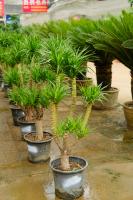Introduction
Hydroelectric power plants use water to produce electricity in a clean and sustainable way. This technology is widely used around the world and provides a significant amount of the electricity produced globally. In this article, we will explore how hydroelectric power plants work and how they use water to generate electricity.
How Hydroelectric Power Plants Work
Hydroelectric power plants work by converting the potential energy of falling water into kinetic energy, which is then used to generate electricity. They consist of several key components, including a dam or weir, a reservoir, a turbine, and a generator.
First, water is collected and stored in a reservoir behind a dam or weir. The water is then released through an intake gate or tunnel to flow through the turbine. As the water flows through the turbine, it spins the blades, which transfer the kinetic energy to a generator. The generator then converts this energy into electrical energy, which is transmitted through power lines to homes and businesses.
Water Management in Hydroelectric Power Plants
Water management is a crucial aspect of hydroelectric power plant operation. The water must be efficiently managed to ensure maximum electricity generation while also maintaining the health of the surrounding ecosystem.
Operators of hydroelectric power plants must carefully balance the amount of water released from the reservoir with the downstream flow and water levels. This process is called water management, and it is critical to prevent flooding and ensure the proper amount of water is available for downstream users.
In addition to water management, hydroelectric power plants must also consider issues such as sediment buildup, fish passage, and erosion prevention. Engineers and operators work together to design and implement solutions that address these challenges and ensure the longevity of the power plant.
Advantages of Hydroelectric Power Plants
Hydroelectric power plants have several advantages over other forms of energy production. For one, they are a clean and renewable source of energy, producing no greenhouse gas emissions. They are also highly efficient and can operate continuously, generating electricity 24 hours a day, 7 days a week. Additionally, hydroelectric power plants can provide peaking power during times of high demand, making them an important part of the power grid.
Furthermore, hydroelectric power plants require relatively low maintenance, making them a cost-effective source of energy. They also have a long lifespan, with many plants operating for decades without major upgrades.
Conclusion
In summary, hydroelectric power plants use water to generate electricity, an efficient and sustainable source of energy. Careful water management and other engineering considerations ensure efficient operation, and the benefits of hydroelectric power plants over other forms of energy production make them an important part of the power grid. As we continue to seek solutions to global energy challenges, hydroelectric power plants offer a reliable and cost-effective way to generate clean energy.

 how many times do yo...
how many times do yo... how many planted tre...
how many planted tre... how many pine trees ...
how many pine trees ... how many pecan trees...
how many pecan trees... how many plants comp...
how many plants comp... how many plants can ...
how many plants can ... how many plants and ...
how many plants and ... how many pepper plan...
how many pepper plan...






























